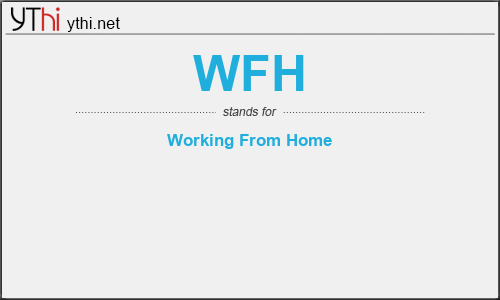What does WFH mean? What is the full form of WFH?
The full form of WFH is Working From Home.
WFH stands for work from home or working from home, depending on how it’s used in a sentence. The acronym is used in messaging tools (e.g., Slack, instant messaging, text message) to communicate they’re working remotely.
According to the Global State of Remote Work, 40% of companies are hybrid — meaning they allow their employees to work in the office or remotely. Since more and more companies are allowing remote work, WFH is becoming a popular acronym. Let’s dive in and learn the meaning of WFH and why it’s important for people who work remotely.
Let’s say your company has a work from home policy. How do you know which days are best for you to WFH?
The right answer will depend from person to person, but companies, like Doximity, have found the WFH Wednesdays are the most beneficial for workers and employers. Having a WFH day in the middle of the week helps break up the week, keep employees engaged, and prevents a midweek slump. If you’re struggling to decide if you should work from home or not, this flowchart will help you make a decision.
Benefits of WFH
There are a few key benefits of working from home (WFH). Employees who WFH often have a better work-life balance and often are more because they don’t spend time commuting into the office and can get their work done quicker in a focused environment. Plus, WFH provides environmental benefits.
Ready to see the benefits for yourself? Check out this video that compares the workday of a WFH employee, and an employee who works from the office.
As people work from home more frequently, they’ll rely on WFH to communicate that they’re working remotely. Looking for more? Learn about telecommuting and how it helps remote workers next.
Working from home means;
- getting set up – knowing what advantages and challenges to expect
- connecting to your WFH community, preventing social isolation
- balancing productivity with resilience – sustainable working from home
- managing work and home boundaries and routines
- applying the principles and practices of great remote collaboration
- managing too many virtual meetings and a lack of online engagement
- maintaining your personal effectiveness
- maintaining trust and team spirit when we may not be able to meet
- staying visible when working remotely
- finding the right balance of trust and control
WFH
means
Working From Home![]()
Translate Working From Home to other language.


Leave a Reply
You must be logged in to post a comment.